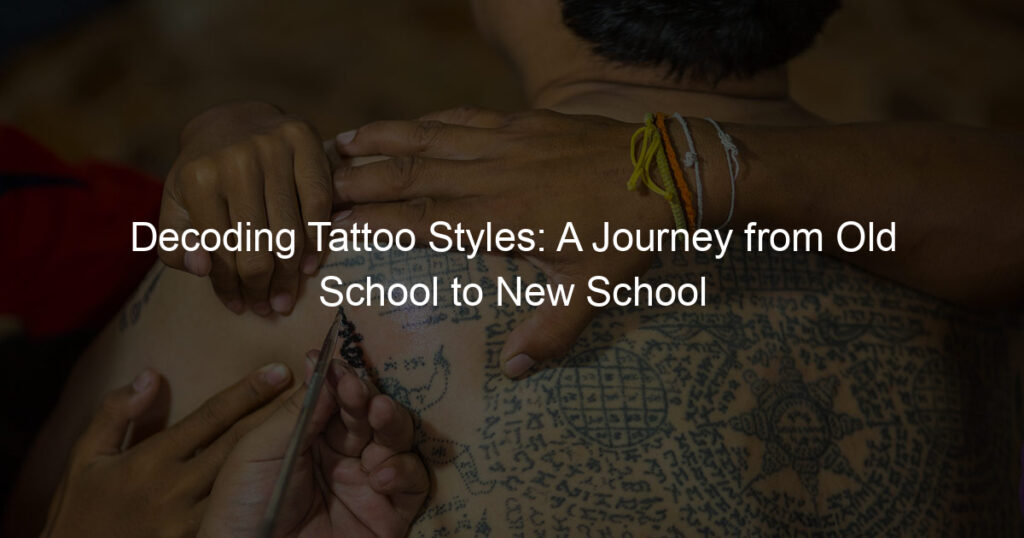Nowadays, tattoos have become popular as many young people use them to express themselves. But are tattoos allowed in Buddhism? Yes, tattoos are allowed in Buddhism, as no laws or rules forbid one from having tattoos.
Many people say that Buddhism tattoos are a sign of devotion to the Buddhism religion and that it’s the intention of the heart that matters. But let’s dig a bit more and learn more about Buddhism’s tattoos.
We will also look at some Buddhist tattoo symbols and their meaning in the Buddhism religion.
Let’s dive in!
Are Tattoos Forbidden in Buddhism?
Are tattoos forbidden in Buddhism? No, they are not. Buddhists tattoo to show love and devotion to their religion. Besides, this is a way for them to show how serious they are about their faith.
For example, Buddhist cultures from Indonesia, Southeast Asia, and the Philippines have practiced Sak Yant or Yantra tattooing since the 9th century. Yantra tattooing involves Buddhist monks using sharpened metal rods to tattoo Indian Yantra designs on their skin.
The Yantra designs are usually phrases and sacred symbols that offer power, protection, and wealth, among other benefits.
Buddhist Tattoo Symbols
Buddhist tattoos represent Buddhist symbols that tell more about the teachings of spiritual leaders and mentors. We have prepared more than eight Buddhist tattoo symbols and their different meanings for you.
1. The Parasol Symbol
This is a traditional Buddhist symbol of royalty and protection. The Parasol has an umbrella shape, meaning people can enjoy the cool shade under it.
It is believed to protect against hostile powers. Parasol, as a tattoo, saves people from extreme suffering and protects them from negative happenings.
2. The Conch Shell Symbol
The Conch is a large shell that was used like a battle horn. The right conch represents the awakening of Dharma’s teaching. Vajrayana Buddhism said the conch was a symbol that fearlessly proclaimed Dharma’s truth.
The conch shell in a tattoo portrays a sign of moving people from unawareness.
3. Two Golden Fish Symbol
The two golden fish symbols are a member of the eight Auspicious symbols of Buddhism. The two fishes represent the Indian rivers, the Ganges and Yamuna. They appear standing vertically with their heads turned inwards and facing each other.
However, a tattoo drawing symbolizes good luck in life and good fortune. It also symbolizes courage and fearlessness, just like fish.
4. The Lotus Flower
The lotus flower symbolizes the purity of mind, body, and spirit. It is usually drawn with eight petals symbolizing the eightfold path, a core tenet in the Buddhist religion. The lotus flower roots are the only ones that grow in the mud, while the flower blossoms on the ground.
It means that beauty can also come from a horrible place, like deep in the mud. However, in a tattoo, the pink lotus flower indicates traditional Buddha teachings, and the white lotus flower indicates purity in mind and spirituality.
The red lotus flower signifies love, and the blue lotus flower indicates wisdom.
5. The Vase Symbol
The vase is also known as the treasure vase or wealth vase. It is one of the eight Auspicious symbols of Buddhism, and it represents Buddha’s compassion, generosity, and teachings.
So, in a tattoo representation, the vase Buddhist symbol signifies good things like health, wealth, and prosperity.
6. The Victory Banner
The victory banner portrays Buddha winning the battle against mara, who was a demon. It shows Buddha’s enlightenment about the demon’s passion, lust, pride, and fear of death.
The tattoo of the victory banner depicts people overcoming their pride, lust, and passion.
7. The Endless Knot
The endless knot shows the rebirth and interconnection of everything in life. It is also referred to as the ‘Mystic Dragon’, which portrays Buddha’s compassion and infinite wisdom to sentient beings.
The endless knot also indicates that religious values and other worldly affairs are connected.
8. The Dharma Wheel
The Dharma wheel, also known as Dharmachakra, is known as the universal symbol of Buddhism and represents the eightfold paths that Buddha teaches.
It can be inked on any part of the body by someone who believes it can lead to a contented life.
9. The Unalome
The Unalome represents a path that one follows in their life. The path can be straight or circular and filled with love, fear, faith, or anxiety. The Unalome symbol also portrays clarity which unfolds after many rough paths.
Final Thoughts
Since Buddhism has been around since the 6th century, it’s a religion with numerous tattoo symbols. Besides, no law in Buddhism condemns the use of tattoos.
And most believers tattoo these symbols as a way of showing their love and devotion to Buddha.














